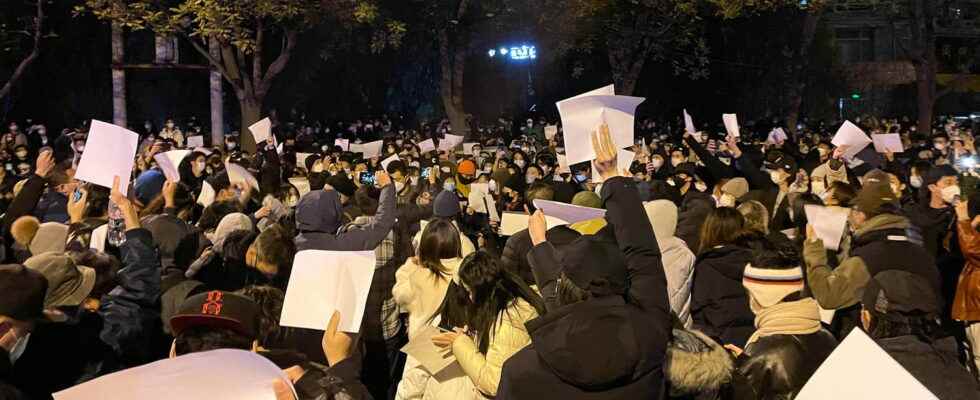CHINA PROTESTS. China has faced numerous demonstrations in recent days to denounce the anti-Covid restrictions deemed too draconian. Will the movement last over time?
The essential :
- A wind of revolt is shaking China. The country, known in the West for not being the most rebellious on the planet, has faced numerous demonstrations organized across the country in recent days.
- This Monday, November 28, 2022, the tension has not subsided in the Middle Kingdom, in a context where the “zero Covid” policy is really starting to exasperate the population, almost three years after the appearance of the virus.
- Will the movement continue? Live news and videos.
Live
15:28 – Where are the protests taking place?
This weekend, demonstrations took place in several cities of the country. First in Urumqi, the starting point of the disputes, in the north-west of China, but also in Wuhan, in the center-east, where the Covid-19 would have appeared for the first time. Shanghai, in the far east, on the shores of the East China Sea, was also the scene of demonstrations, as was the capital Beijing, in the north.
15:13 – Demonstrations after the fire in a building
In China, protests erupted in many cities across the country after a fire at a building in Urumqi, in the northwest of the country, left ten people dead and nine injured. In the eyes of many people, the human losses are linked to the late arrival of help on site due to the restrictions linked to Covid-19 put in place in the city, with in particular roads strewn with pitfalls to constrain movement, as well as only barricades around certain buildings. The death of these people, which occurred on Thursday November 24, 2022, is the starting point for the protests organized throughout the weekend.
Learn more
The fire of a building at the origin of the demonstrations
A burning building, ten people who died in the fire and chain reactions pointing to the restrictions linked to Covid-19 guilty of this heavy human toll. In China, the starting point of the protest that is hitting the country is linked to the rules to limit the spread of the coronavirus deemed too strict by residents and having, according to them, slowed down the intervention of the emergency services when the fire broke out. in Urumqi. Indeed, in order to prevent the population of this northwestern city from escaping confinement, the roads are blocked by obstacles and some buildings are even blocked. If only the first elements of a difficult circulation have been confirmed, it is now too much for some of the Chinese, subject to a strict regime since 2020. Enough to trigger a wave of disputes.
In China, the protests are not quite like the ones we know. There, no big banners, just white sheets brandished to denounce censorship. But slogans hostile to President Xi Jinping resounded in the processions, organized spontaneously on Sunday November 27, notably in Beijing and Shanghai. “We want freedom, democracy, freedom of expression of the press” launched some in a main street of Shanghai, as noted by the correspondent on the spot of France 24. “We do not need tests Covid, we need freedom” demanded others from the side of Beijing.
Demonstration in support of Urumqi in Shanghai, and against health policy. “We want freedom, democracy, freedom of expression of the press” ask the young people gathered (I let the Sinics appreciate this last slogan). I have never seen this in China pic.twitter.com/nTSxRre1NP
— Simon Leplatre (@SLeplatre) November 26, 2022
A minority movement
Many observers explain that such a protest movement has not been known in China since the demonstrations of Tian’anmen, in 1989 which demanded more democracy in the country. They ended in a bloodbath with several thousand dead after an army-led crackdown was ordered. At this stage, the demonstrations are far from affecting a majority of Chinese, especially since censorship is raging on social networks where images of the movements are struggling to spread. Especially since in the middle of the Football World Cup, broadcast in China, the images of fans without masks in the stands are not shown, replaced by close-ups of the players or the staff of the teams.
